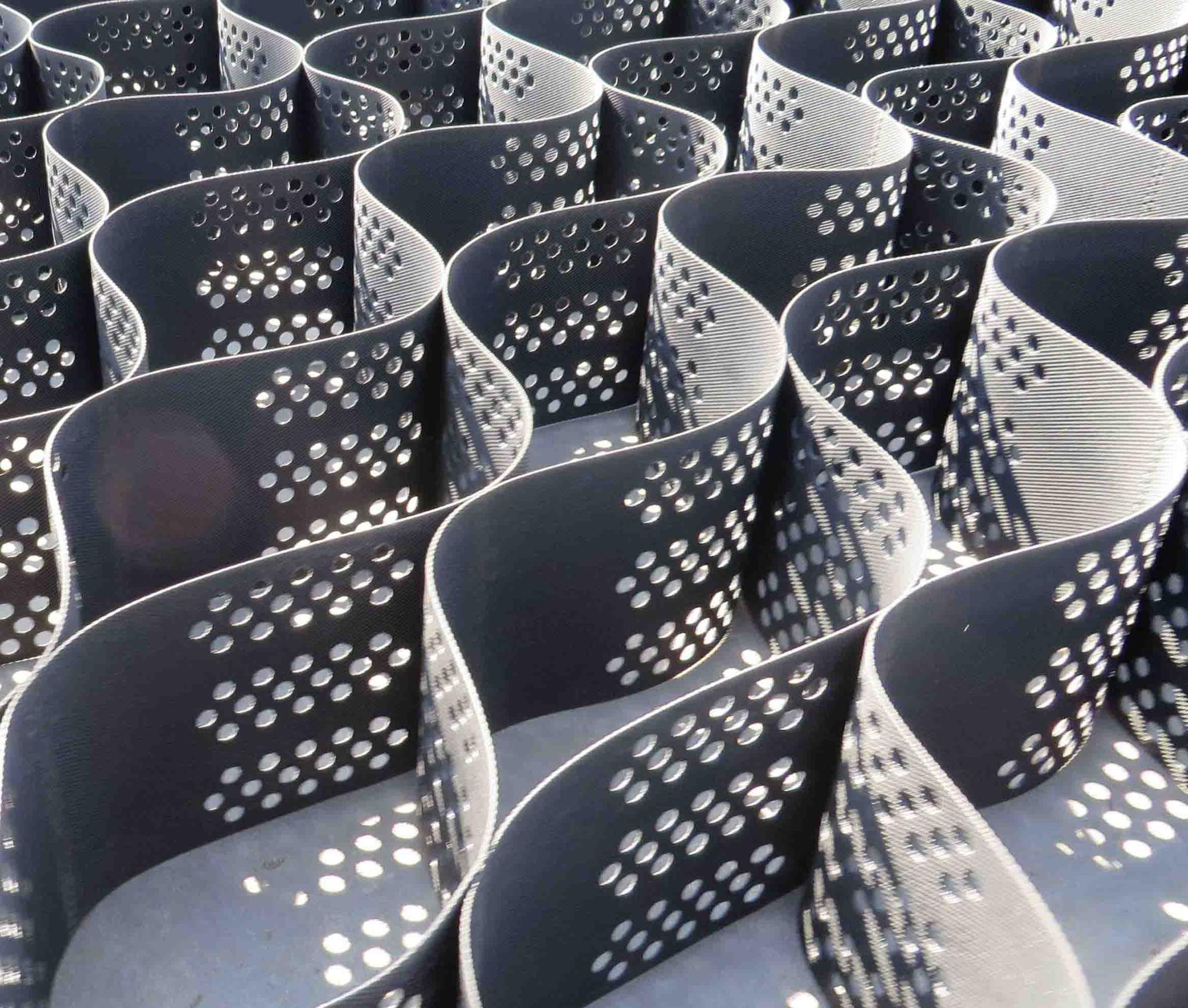1. Deal with half-filled and half-excavated subgrade
When building an embankment on a slope with a natural slope steeper than 1:5, the embankment base should be digging steps. When the width of the steps should not be less than 1M, when the road is built or rebuilt in phases and the road is widened, the connection between the new and old roadbed fill slopes should be opened. For digging steps, the width of high-grade highway steps is generally 2M, and geocells are laid on the horizontal surface of each step, and the geocell’s own elevation confinement reinforcement effect is used to better solve the problem of uneven settlement.
2. Roadbed in sandy areas
The low embankment should be the main roadbed in the sandy area, and the filling height is generally not less than 0.3M. Due to the professional requirements of the low roadbed and the heavy load on the roadbed in the sandy area, the use of geocells can play a side effect on the loose filler. The limited height ensures that the roadbed has high rigidity and strength to withstand the load stress of large vehicles.
3. Filling and reinforcement of the subgrade behind abutment
The use of geocells can better achieve the purpose of reinforcement of the abutment back. Sufficient friction can be generated between the geocells and the filler, which can effectively reduce the uneven settlement between the roadbed and the structure, and finally can effectively alleviate the "abutment jump". Early impact damage to the bridge deck caused by “car” disease
4. Roadbed in permafrost regions
The minimum fill height should be reached in the construction of filled roadbed in permafrost regions to prevent the occurrence of tumbling or the lowering of the upper limit of the frozen layer, resulting in excessive settlement of the embankment. The unique vertical reinforcement effect of the geocell and the effective implementation of the overall confinement can ensure the minimum fill height in some special sections to the greatest extent, and make the fill have high-quality strength and rigidity.
5. Treatment of collapsible loess roadbed
When expressways and first-class roads pass through collapsible loess and loess sections with good compressibility, or when the allowable bearing capacity of the foundation of a high embankment is lower than the pressure of the combined load of vehicles and the self-weight of the embankment, the subgrade should also be adjusted according to the bearing capacity requirements. After processing, the superiority of the geocell is undoubtedly evident.
6. Saline soil, expansive soil
Reinforcement measures are adopted for highways, first-class highways, shoulders and slopes built with saline soil and expansive soil. The facade reinforcement effect of the cell is the most excellent one of all reinforcement materials, and it has excellent corrosion resistance. It can fully meet the requirements of constructing high-grade highways in saline soil and expansive soil.
